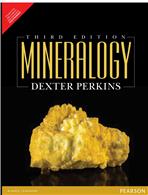Mineralogy

|
Author(s):
Author:
Dexter Perkins
- ISBN:9789332550421
- 10 Digit ISBN:9332550425
-
Price:Rs. 1140.00
- Pages:453
- Imprint:Pearson Education
- Binding:Paperback
- Status:Available
-
|
This student-oriented text is written in a casual, jargon-free style to present a modern introduction to mineralogy. It emphasizes real-world applications and the history and human side of mineralogy. This book approaches the subject by explaining the larger, understandable topics first, and then explaining why the "little things" are important for understanding the larger picture.
Table of Content
Part 1
Chapter 1: Elements and Minerals
Chapter 2: Crystallization and Classification of Minerals
Chapter 3: Mineral Properties: Hand Specimen Mineralogy
Chapter 4: Optical Mineralogy
Chapter 5: Igneous Rocks and Silicate Minerals
Chapter 6: Sedimentary Minerals and Sedimentary Rocks
Chapter 7: Metamorphic Minerals and Metamorphic Rocks
Chapter 8: Ore Deposits and Economic Minerals
Part II: Symmetry, Crystallography, and Atomic Structure
Chapter 9: Crystal Morphology and Symmetry
Chapter 10: Crystallography
Chapter 11: Unit Cells, Points, Lines, and Planes
Chapter 12: X-Ray Diffraction and Mineral Analysis
Chapter 13: Atomic Structure
Part III: Mineral Descriptions
Chapter 14: Descriptions of Minerals
|
Salient Features
• Emphasis is placed on problems encountered in everyday life, including environmental problems.
• Sciences outside of mineralogy, such as petrology and chemistry, are emphasized to place the material in context for students.
• The history and human aspects of mineralogy are discussed by profiling individuals and their contributions.
• Topical boxes relate mineralogy to everyday life, as well as other branches of science.
• Examples are illustrated with photos and color plates.
• Descriptions of minerals are brief and concise.
• Clearly described objectives begin each chapter.
• A Glossary of nearly 1,000 mineralogical terms is provided, and References appear at the end of each chapter.
• "Questions for Thought" appear at the end of each chapter and encourage students to explore further.
• In-depth treatment of Optical Mineralogy is adapted from the very successful "Minerals in Thin Section."
|
|
|
|
|